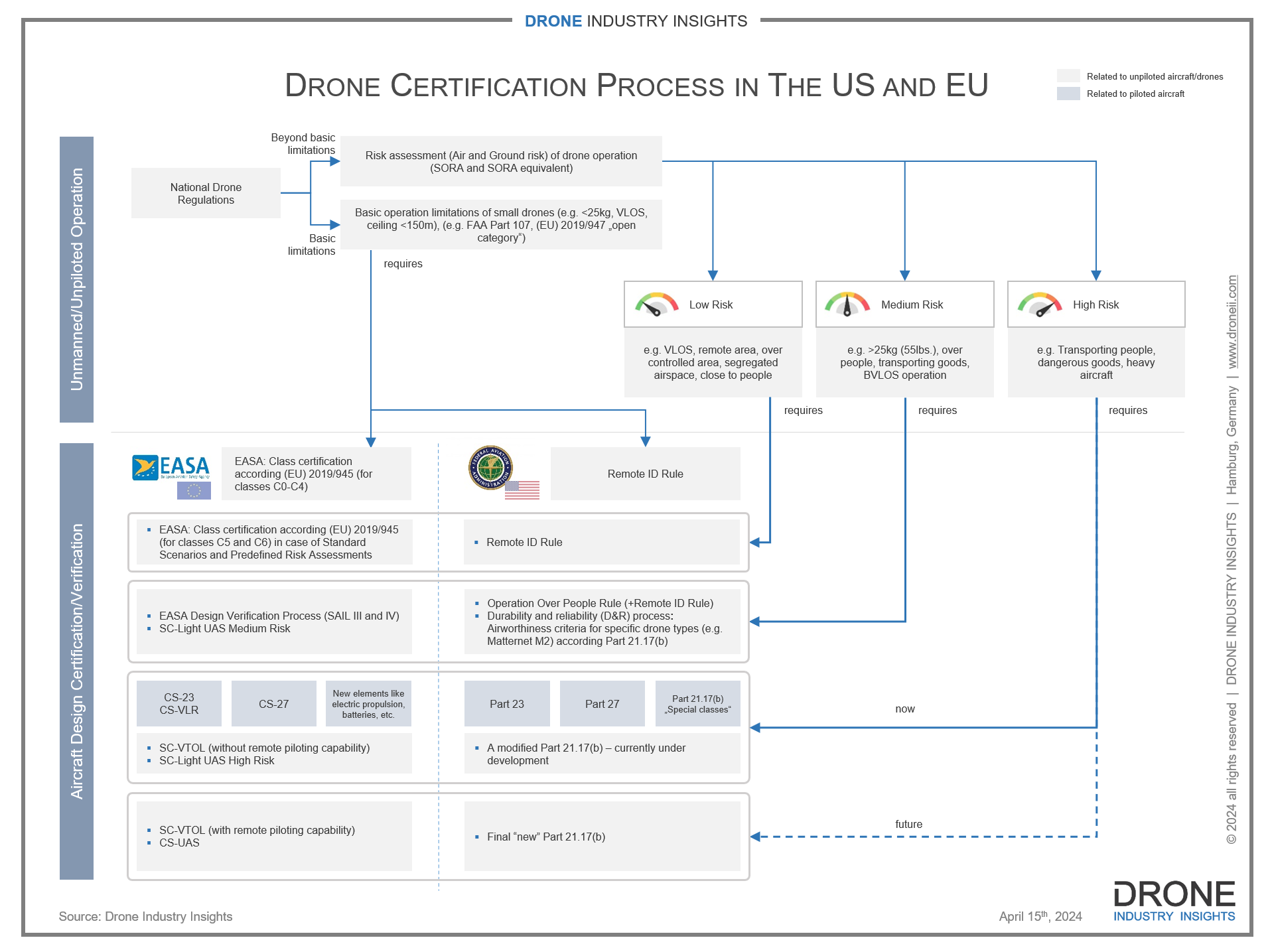For the commercial drone sector to continue expanding, the landscape of regulatory frameworks has been in need of a boost. In recent years, the focus has shifted significantly towards the process of drone certification. This is a crucial step for executing advanced operations and ensuring airworthiness in line with national and international standards.
Drone certification is a testament to an aircraft’s compliance with its design and operational safety. Until recently, it has been a more peripheral concern, overshadowed by broader concept of “drone regulation.” In the early years of drone technology, the drone industry consisted of a simpler regulatory environment, where general guidelines sufficed. However, the narrative has changed with the advent of more stringent regulations and the categorization of operational risks, making drone certification indispensable for higher-risk operations.
In jurisdictions like the United States and Europe, the criteria for certification vary by the risk profile of drone operations. Under the Federal Aviation Administration (FAA) in the U.S., low-risk operations are covered by Part 107, which exempts basic operational limits from stringent certifications. Conversely, the European Union Aviation Safety Agency (EASA) mandates class certifications for drones operating under the 'open category' as per EU regulation 2019/945, illustrating a structured approach to risk management.
For operations that carry medium to high risks—like flying drones over crowds, at night, or beyond the pilot's line of sight—there are stricter rules. Drones must meet specific certifications, and operators and pilots might need extra qualifications. In Europe, there's a special review process for these medium-risk flights, while in the U.S., strict rules about flying over people and ensuring drone reliability are essential. High-risk operations, such as carrying people or hazardous materials, must meet even tougher standards similar to those for manned aircraft. This highlights the importance of strict regulation and thorough compliance.
To understand regulatory progress globally, the Drone Readiness Index by Drone Industry Insights compares how different countries are doing in terms of drone regulations. It looks at factors like the range of drone operations, government support, and how well drones are integrated into national airspace. Recent results show Australia leading with forward-thinking rules, followed by Canada and Spain. Meanwhile, newer players like Colombia and Ireland are beginning to stand out.
Significant global updates include the European Commission's approval of vertical takeoff and landing (VTOL) operations and air taxis, and the U.S. Federal Aviation Administration's focus on drone detection and control. These changes are part of a bigger effort to safely integrate drones into shared airspace, moving from basic rules to a more detailed and specific system for drone certification. As more progress is made by regulatory authorities around the globe, keeping up with these changes and understanding what they mean is vital for anyone in the commercial drone industry.
















Comments